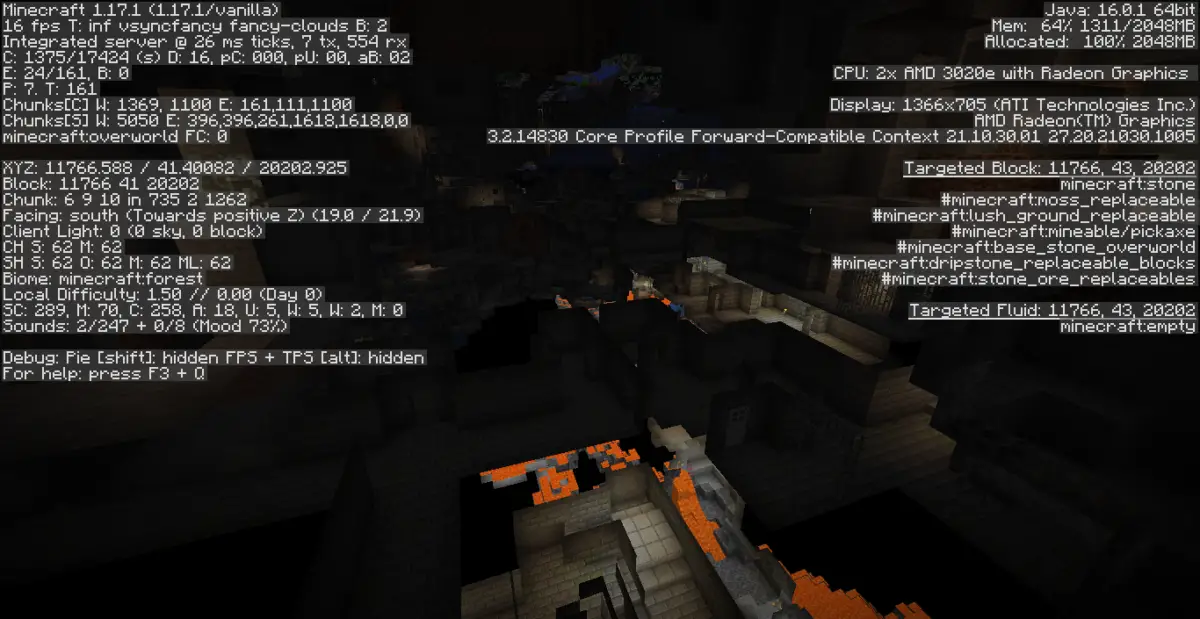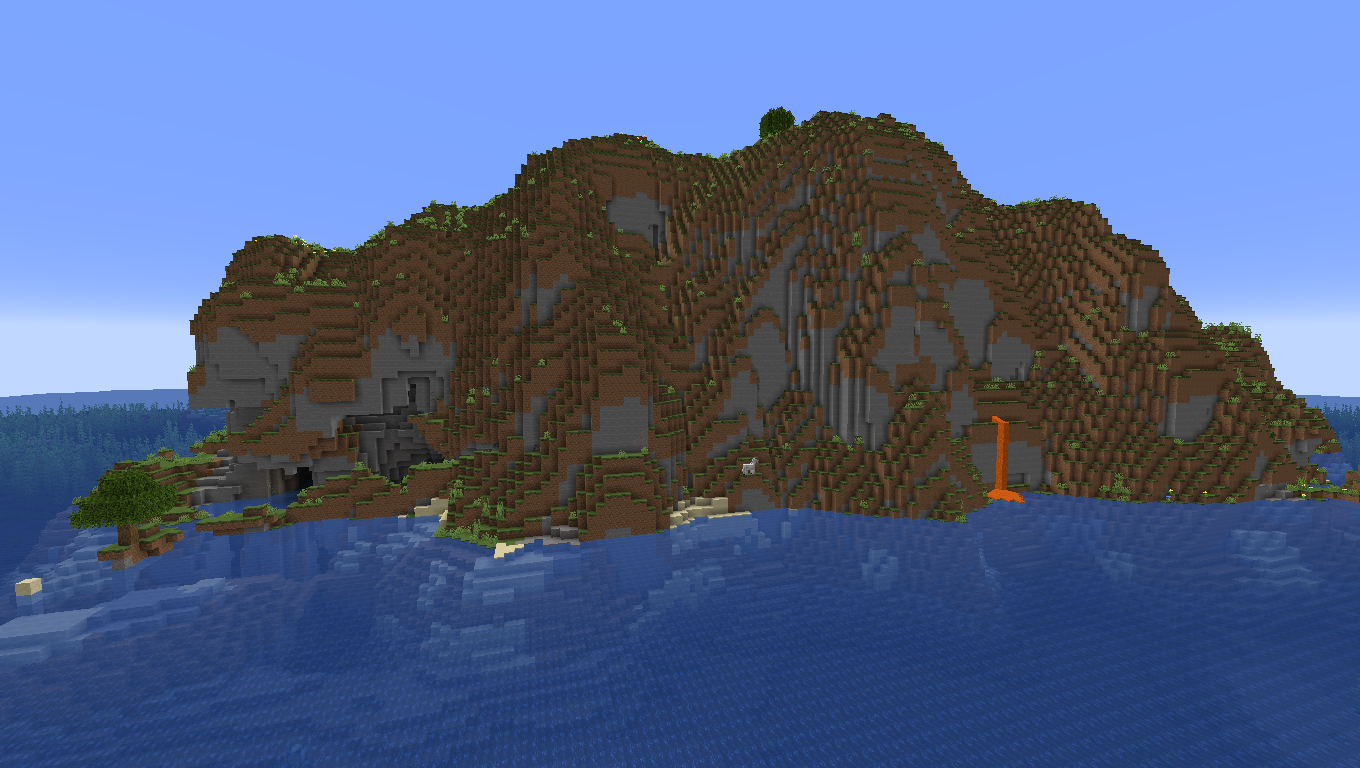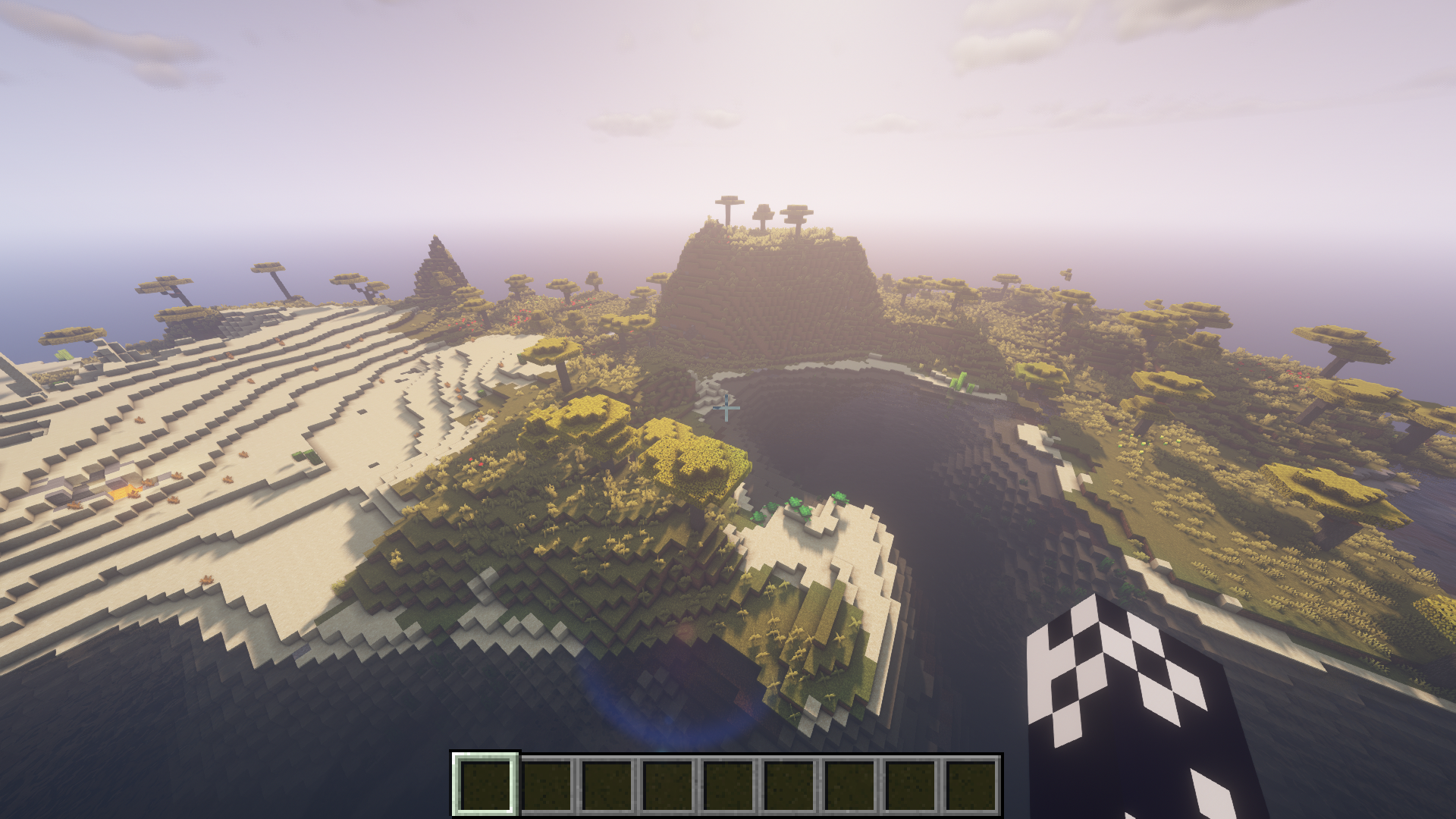
How big is the Nuke in Minecraft?
Are you ready to uncover the explosive secrets of Minecraft? Get ready to dive into the world of nuclear power and witness the incredible might of the Nuke! In this article, we will explore the burning question on every player’s mind: "How big is the Nuke in Minecraft?"
Prepare to be amazed as we delve into the blast radius of this mighty weapon. The destructive power of the Nuke is contingent upon the blocks surrounding it. Let’s start by exploring its underground blast radius, where its true potential begins to emerge.
When detonated beneath the surface, the Nuke reveals its immense power with a blast diameter of 20 blocks. That’s right, a whopping 10 block radius of devastation! Just imagine the chaos unleashed below ground as this explosive force rips through the terrain.
Now, let’s take the Nuke to the open air and witness the spectacle it creates. Above ground, it expands its reach even further, boasting a blast diameter of 76 blocks. That’s an incredible 38 block radius! However, be warned: low blast resistance blocks can experience damage up to approximately 130 blocks away. So, it’s not just the immediate vicinity that needs to brace for impact when the Nuke is unleashed.
But what about the impact on those fragile, low blast resistance blocks? Well, they certainly don’t fare well in the face of this formidable force. They can suffer damage even beyond the usual blast radius, making the destruction spread up to around 130 blocks away. So, if you have any of these less resilient blocks nearby, you might want to consider reinforcing or relocating them before triggering the Nuke.
Now that we know the basic facts about the Nuke’s size and destructive capabilities, let’s explore the factors that influence its magnitude. Minecraft is a game that constantly surprises us, and the Nuke is no exception. Various elements, such as the surrounding blocks, can affect the Nuke’s size and power. So, it’s not just a matter of lighting the fuse and watching the world explode. There are strategic considerations at play here!
Get ready to uncover the secrets of the Nuke and learn how to utilize its power to your advantage. From choosing the perfect location to understanding the limitations of different blocks, mastering the Nuke requires both skill and knowledge.
Join us as we embark on this explosive journey through the vast world of Minecraft. Whether you’re a seasoned player or a curious beginner, this article will equip you with the information you need to navigate the awe-inspiring might of the Nuke. Buckle up and get ready to witness the destruction and marvel at the incredible forces that can be harnessed in this pixelated universe.
So, are you prepared to take a deep dive into the world of Minecraft and discover just how big the Nuke truly is? Let’s go!
Underground Blast Radius
The underground blast radius of a Nuke is something that we don’t often think about in our day-to-day lives. I mean, really, who sits around pondering the destructive power of a nuclear explosion? But hey, today we’re going to dive into this fascinating topic and shed some light on it for you. So buckle up and let’s get started!
First things first, let’s talk about what exactly a blast radius is. It’s basically the area that gets affected by an explosion, like the aftermath of a dynamite stick gone wrong. And let me tell you, when it comes to a Nuke, the blast radius is nothing to scoff at.
When a Nuke detonates underground, its blast diameter reaches around 20 blocks. That’s like a monster-sized explosion that can affect a pretty substantial area. Just to put things into perspective, imagine you’re in a Minecraft world and you set off a Nuke underground. Boom! Suddenly, everything within a 10-block radius is history. It’s like the earth just got a huge bellyache and decided to let it all out.
Now, if you were thinking about setting off a Nuke above ground, you might want to reconsider. The blast diameter in the open sky is a whopping 76 blocks. That’s like the explosion equivalent of a giant Godzilla stomping through your neighborhood. But here’s the thing, low blast resistance blocks can be damaged up to around 130 blocks away. So if you have any delicate structures nearby, you might want to reinforce them with some stronger blocks.
So why does the blast radius change depending on whether the Nuke is above or below ground? Well, it all comes down to the surrounding blocks. You see, when a Nuke detonates, it releases a tremendous amount of energy. And that energy needs somewhere to go. When it’s underground, the surrounding blocks help to contain and absorb some of that energy, reducing the blast radius. But when it’s out in the open, there’s nothing to hold it back, so the blast radius expands.
Now, you might be wondering why all this information matters. Well, for starters, it’s always good to be informed about the potential dangers of something as powerful as a Nuke. Plus, knowing the blast radius can help you plan and strategize in games like Minecraft. So next time you’re thinking about setting off a Nuke, make sure you take into account the surrounding blocks and the potential damage it could cause.
The underground blast radius of a Nuke is no joke. It can wreak havoc within a 10-block radius, while an above-ground explosion can affect an area up to 76 blocks wide. So whether you’re in a Minecraft world or just curious about the power of these destructive forces, remember to always handle them with caution. Stay safe, my friends!

Above Ground Blast Radius
The blast radius of a Nuke is a fascinating topic that can both amaze and terrify us. But fear not, my novice friends, because today I am here to shed light on the above ground blast radius, and help you understand this concept without getting lost in a sea of technical jargon. So buckle up and let’s dive in!
Imagine you have a Nuke, a powerful explosive device, and you decide to set it off above ground, in the open. Well, hold on to your hats because the blast radius of that bad boy is going to be massive! We’re talking 76 blocks in diameter, or a whopping 38 blocks in radius. To put that into perspective, it’s like having a destructive force that can reach as far as your neighbor’s house, the park down the street, and maybe even that annoying dog that always barks at night (just kidding, we love all dogs!).
Now, here’s where things get even more interesting. While the blast radius usually extends up to 76 blocks, low blast resistance blocks can actually be damaged up to approximately 130 blocks away. That means those delicate structures made of weaker materials are in for a world of hurt if they’re within the vicinity of the blast. It’s like a hurricane of destruction, sparing nothing in its path. So be careful where you decide to detonate that Nuke, my friends!
But wait, there’s more! The size of the blast radius can also be influenced by the blocks surrounding the Nuke. If it’s underground, the blast diameter is significantly reduced to 20 blocks, or 10 blocks in radius. It’s like the Nuke’s power gets contained within the earth, making it a little less scary. So if you want to minimize the destruction, going underground is the way to go.
Now, let’s talk about a few tips to keep in mind when dealing with Nukes. First and foremost, safety should always be your top priority. Only use Nukes in controlled environments, like creative mode or designated areas in certain games. Secondly, always consider the blast radius and potential damage to nearby structures before setting off a Nuke. You don’t want to be responsible for destroying your friend’s amazing castle, do you?
The above ground blast radius of a Nuke is a force to be reckoned with. It can reach far and wide, causing destruction wherever it goes. But with a little understanding and caution, you can navigate this explosive territory safely. Just remember, it’s all about balance and making the right choices. So go forth, my novice friends, and may your Nuke adventures be both thrilling and responsible!
Effect on Low Blast Resistance Blocks
The blast radius of a Nuke is no joke! It’s like a firework on steroids. But did you know that the blocks surrounding a Nuke can have a big impact on its explosion? It’s true! Let’s dive into the world of low blast resistance blocks and how they can affect the size of a Nuke’s blast.
First things first, let’s talk about the blast radius of a Nuke. When this explosive device goes off, it can cause some serious damage. Underground, it will generally have a blast diameter of 20 blocks, which means it can destroy anything within a 10 block radius. That’s pretty intense! But wait, it gets even crazier. Above ground, in the open, the blast diameter increases to a whopping 76 blocks. Imagine the devastation!
Now, here’s where the low blast resistance blocks come into play. These blocks are not as sturdy as their high blast resistance counterparts. They are like the weak links in the chain. When a Nuke explodes, it can damage low blast resistance blocks up to approximately 130 blocks away. That’s a significant jump from the normal blast radius!
To put it into perspective, let’s imagine you’re building a fortress to protect yourself from Nukes. You have two choices for your walls: high blast resistance blocks or low blast resistance blocks. The high blast resistance blocks are like solid steel, while the low blast resistance blocks are more like cardboard. Which one would you choose? I think the answer is pretty clear. You don’t want your fortress crumbling to pieces because you skimped on the construction materials.
So, what are some examples of low blast resistance blocks? Well, things like dirt, wood, and wool are not going to hold up against the force of a Nuke. They might as well be made of tissue paper! On the other hand, blocks like obsidian, stone, and iron have a much higher blast resistance. They are the tough guys of the block world.
Now, I know what you’re thinking: "How do I protect my precious creations from the destructive power of a Nuke?" Well, fear not! Here are a few tips to keep in mind:
- Use high blast resistance blocks for important structures. It’s better to be safe than sorry.
- Keep low blast resistance blocks far away from your Nuke. The farther, the better.
- If you must use low blast resistance blocks, reinforce them with high blast resistance blocks. Think of it like adding steel beams to a wooden house.
Remember, the blast radius of a Nuke is nothing to take lightly. It can turn your world upside down in an instant. So, be smart about your block choices and protect what’s important. Stay safe, my friends!
Factors Influencing the Nuke’s Size
Factors Influencing the Nuke’s Size
Ah, the mighty nuke. The stuff of action movies, video games, and late-night conspiracy theories. We’ve all heard of them, but how much do we really know about these explosive powerhouses? Well, let’s dive in and uncover the factors that influence the size of a nuke.
1. Location, Location, Location
Just like in real estate, the blast radius of a nuke depends on its surroundings. If it’s lurking underground, it will generally have a blast diameter of 20 blocks. That’s like a destructive bubble of devastation, my friends, with a radius of 10 blocks. It’s like a firework that got a little too excited and decided to level everything around it.
2. The Great Outdoors
Now, picture this: you’re standing in a wide open field, enjoying the fresh air, when suddenly, BOOM! A nuke goes off in the distance. If you’re not vaporized instantly, you might notice that the blast diameter has now expanded to a whopping 76 blocks. That’s like a giant invisible hand smacking everything within a 38-block radius. And here you thought your neighbor’s loud music was annoying.
3. Beware the Weaklings
Okay, let’s talk about low blast resistance blocks. These poor little fellas don’t stand a chance when a nuke comes a-knockin’. They crumble like a stale cookie, and the devastation can extend up to an impressive ~130 blocks. That’s like a domino effect, where one block falls, then another, and before you know it, half the neighborhood is in ruins. So, if you’re building your home out of weak blocks, you might want to reconsider your life choices.
4. "But how do I protect myself?" you ask
Fear not, my novice nuke enthusiasts, for I have some tips to keep you safe. First and foremost, if you’re planning to unleash a nuke, make sure it’s far away from anything you hold dear. Your house, your pets, your secret stash of Oreos – keep them all out of harm’s way. Second, consider building underground or using strong, blast-resistant materials like obsidian or bedrock. These babies can withstand a nuke’s temper tantrum like a boss.
5. The Aftermath
So, what happens after the dust settles? Well, my friends, you’re left with a world that has been forever changed. Structures reduced to rubble, the land scarred and forever altered. It’s a stark reminder of the immense power that humans have harnessed.
The size of a nuke’s blast radius depends on its location – underground or above ground – and the strength of the blocks surrounding it. Low blast resistance blocks need to watch their backs because they can suffer damage even farther away. Remember to be responsible and considerate when playing with these explosive toys. And if you ever find yourself tempted to detonate a nuke, just remember: Oreos don’t taste as good in the middle of a nuclear wasteland. Stay safe, my friends.

The Nuke in Minecraft is no joke when it comes to its explosive power. We have explored its underground blast radius, its above ground blast radius, its effect on low blast resistance blocks, and the factors influencing its size. So, let’s wrap it up and summarize what we’ve learned about this explosive phenomenon.
When buried deep below the surface, the Nuke’s blast diameter is about 20 blocks or a 10-block radius. That’s quite a punch, but it’s nothing compared to what happens when this explosive device sees the light of day. When detonated above ground, the Nuke’s blast diameter expands to a whopping 76 blocks, creating a destruction zone that would make even the most seasoned players take a step back.
But here’s a little secret: low blast resistance blocks can be damaged even beyond the 76-block radius. Yes, you heard it right! These feeble blocks can suffer up to about 130 blocks of damage. So, if you’re planning to build a fortress made of sand, gravel, or any other low blast resistance material, you better think twice before pressing that detonation button. The Nuke will show no mercy!
Now, you may wonder what factors influence the Nuke’s size. Well, it’s not just about its own explosive power but also about the blocks surrounding it. The blast radius will vary depending on the materials nearby. So, if you’re thinking of creating a controlled explosion, consider the type of blocks in the vicinity. Choose wisely, my friends!
In this article, we’ve covered the nitty-gritty details of the Nuke’s size. But remember, it’s not just about its magnitude. It’s also about the fun and thrill it brings to the game. It’s about the exhilarating feeling of unleashing sheer chaos in the Minecraft world. The Nuke is like a fireworks display on steroids, a spectacular show that will leave both you and your virtual neighbors in awe.
So, whether you’re an enthusiastic builder trying to clear space or a mischievous player looking for some explosive entertainment, the Nuke in Minecraft is your go-to option. Just be careful where you place it, as you don’t want to accidentally obliterate your meticulously crafted creations.
In a world where creativity knows no bounds, the Nuke adds an extra element of excitement. It’s a reminder that in Minecraft, you have the power to shape and reshape the landscape as you please. It’s an opportunity to let your inner pyromaniac run wild, albeit in a virtual setting.
The Nuke in Minecraft is a force to be reckoned with. Its blast radius, whether underground or above ground, is not to be underestimated. So go ahead, embrace the explosive chaos, and remember to use it responsibly. Happy detonating, fellow Minecrafters!